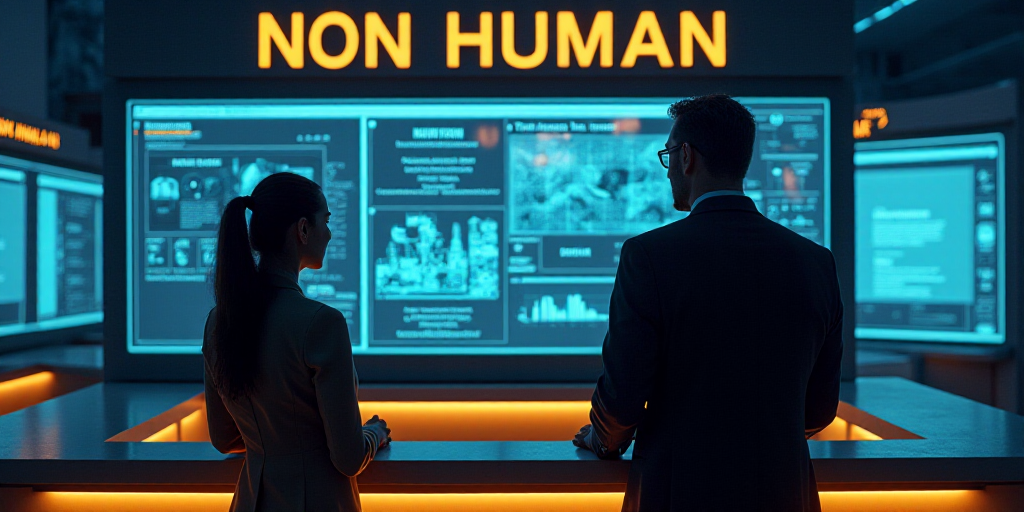An Unconventional Tech Hub: Huawei’s Dongguan Offices
Upon entering Huawei’s offices in Dongguan, China, one might not first encounter a server or robot but rather a pantheon. The walls display portraits of renowned figures in science and technology, including Albert Einstein, Alan Turing, Charles Darwin, Alexander Graham Bell, Richard Feynman, Niels Bohr, and John Von Neumann. These figures serve as guardians of a technological project that honors its intellectual lineage.
Huawei: A Civilization Laboratory
Huawei transcends being just a smartphone brand or networking company. Its themed rooms, named “Darwin,” “Max Planck,” and “Von Neumann,” showcase a vision of the digital world. These spaces orchestrate a world where artificial intelligence (AI) writes short telenovela scripts, and entire cities are managed through real-time data mapping.
The Darwin Room: An Interconnected Ecosystem
In the “Darwin Room,” visitors are introduced to a foundational ecosystem supporting various services, including the Internet of Things, streaming entertainment, industrial monitoring, and more. All these elements are interconnected and processed in milliseconds.
The eSports Hotel: Minimizing Latency in Gaming
The “eSports Hotel” concept explores how latency can either ruin or enhance competitive gaming experiences. Huawei proposes that a cloud carrier intervene between the user and their internet provider, accelerating application responses and enabling demanding games to run smoothly.
AI-Generated Fiction: The Power of Automation
An AI-generated fiction titled “2049” is presented, where a character named Itan embarks on a journey to the HD 9027B system in search of an alien civilization. While seemingly trivial, this feat requires a sophisticated system capable of creating characters, images, and dialogues without human intervention.
Data Storage, Transmission, and Filtering: The Max Planck Room
The “Max Planck Room,” named after the father of quantum physics, focuses on data storage, transmission, and filtering in the cloud. Here, Huawei’s satellites collect 1.8 terabytes of visual data daily from the planet. However, only 36 GB reach Earth’s terminals, refined by AI that eliminates cloud-blocked or low-utility images.
John Von Neumann: Integrating AI with Robotics
John Von Neumann, after whom another Huawei room is named, was one of the architects of the computational model defining today’s hardware-software relationship. Huawei symbolically integrates AI models with robots inspecting the world’s largest high-speed rail network every night.
Overcoming Adversity: Fostering Technological Autonomy
This innovative drive didn’t emerge from thin air. It stemmed from isolation when the U.S. imposed restrictions on Chinese companies using software from firms like Microsoft, Google, and Oracle. Huawei responded with self-development.
The Gauss DB Database: A Testament to Resilience
Gauss DB, developed in response to these restrictions, is now compatible with 70% of Oracle workloads and offers a 30% performance boost. The need for survival became a virtue, driving technological self-sufficiency.
Smart City Project: Integrating Real-Time Data
Huawei collaborates in Shenzhen, one of the world’s largest urban laboratories, on a digital platform integrating real-time data from health, security, mobility, and waste management services.
Algorithmic Urban Management: A Daily Practice
For instance, sensors detect overflowing trash in a city area, triggering a protocol that contacts the responsible department, coordinates cleaning (possibly by a robot), and documents the solution. This is algorithmic urban management, not futuristic utopia but daily practice.
Continuous Innovation: Honoring a Global Intellectual Lineage
What Huawei celebrates in its rooms isn’t just technical efficiency or software originality. It’s the continuity of an intellectual story from Bohr to Turing, from Planck to Von Neumann. China honors this lineage while reinventing it, incorporating its developers, language models, and data architectures into a global narrative.
Beyond Silicon Valley: A New Tech Narrative
Huawei’s endeavor in Dongguan, relatively unknown outside industrial maps, reveals that innovation isn’t exclusive to Silicon Valley. Nor is the ability to narrate the world through technology. Amidst rooms named after European scientists and prototypes resembling science fiction, Huawei experiments with an alternative civilization or a civilization’s alternative.






